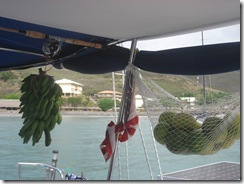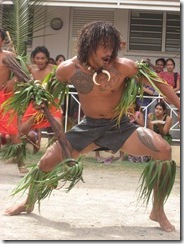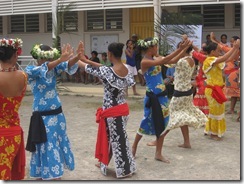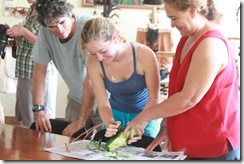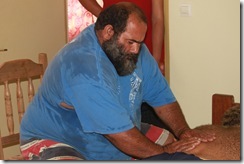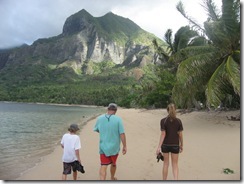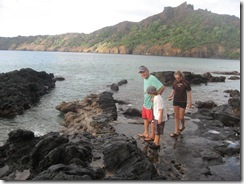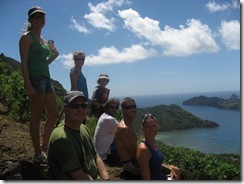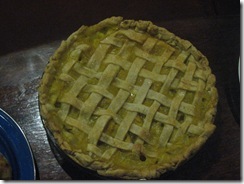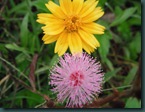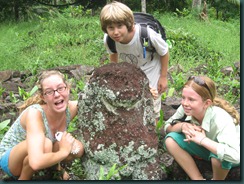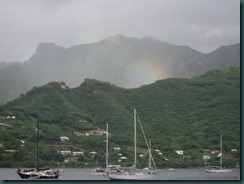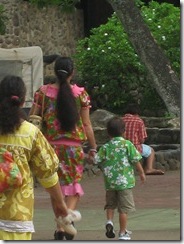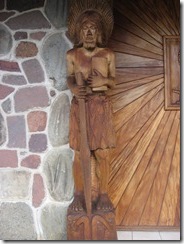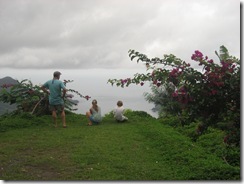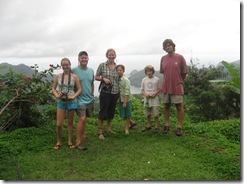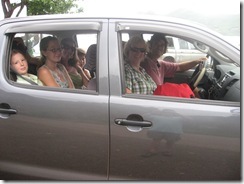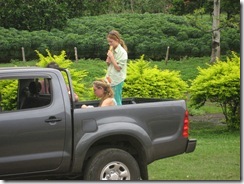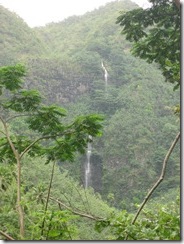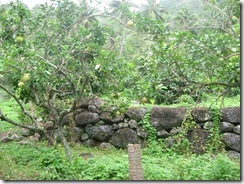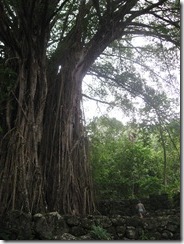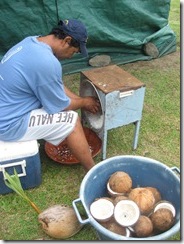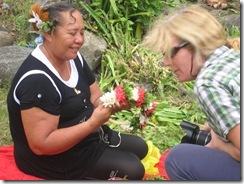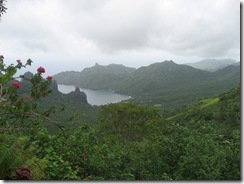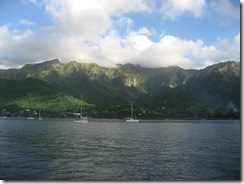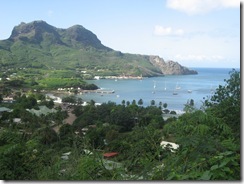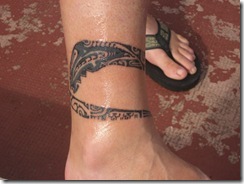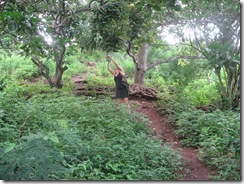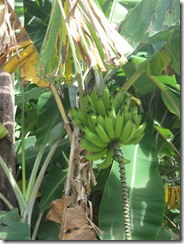It’s been a real treat to swim in the crystal clear white-sand-bottom coral-lined bay of Anaho, a picturesque paradise on the north side of Nuku Hiva. And the treat is not just the eye candy. We’ve been unable (or unwilling) to do any extensive swimming in Taiohae Bay, a black sand bay, known to be home to plenty of sharks and where we spent our first 13 days after making landfall. Rumor has it that a local boy was bitten by a shark last year and died of his wounds. Tempting fate is not on my ‘to do’ list.
However, as our friend and former navy diver Yp said when warned of the sharks by another cruiser while he was diving our anchor, sharks are everywhere in the ocean – especially in tropical waters. This happens to be particularly true in the South Pacific, where apparently a ridiculously large percentage of the world’s shark population lives. The fact is, if we want to truly experience the South Pacific, we have to get comfortable swimming in the water.
Here is what our friend Caren Edwards (who cruised with her family for five years) said about overcoming our fear of swimming with sharks:
1. Get a good shark book (we have one) . Knowledge is power over our fears, so get to know the different kinds of sharks, which are the aggressive ones, and what their different behavior means. They show curiosity first, so there is plenty of time to get out of the water before they start showing agitation, arching or circling behavior which precede an attack. Apparently, most of the sharks we will see on our trip will be reef sharks, both black or white tip, which are used to eating small reef fish. This means that we are not their natural food so they may come to check us out but then they move on.
Caren has had first hand experience with this. She was apparently a ‘shark magnet’ on her many dives, snorkels and simple anchorage swims. She told us of one instance when she came face to face with one, almost bumping into it, as she rounded a coral head. They took a look at each other and then each went on their opposite ways.
2. Ask the locals. Caren warns that other cruisers are often ignorant about sharks and give misinformation based on their fears and inexperience. So in addition to learning from a reliable written or online source, it makes sense that the locals are a great source of knowledge about the sharks in their particular area. They’ll know if any tiger sharks have been around, for example, and if so, it’s important to stay clear. Simply do as the locals do.
It is interesting that the locals in Taiohae Bay do body surf and (semi-)surf when the breaking waves are big, notwithstanding last year’s fatal shark attack. For us, the water just seems too murky to want to get in, so there’s little incentive to get past our shark fears.
As for aggressive sharks, there are two places Caren warned us about. One was on the crossing – there are oceanic deep water white tip sharks that are dangerous to swimmers, so she suggested having someone on shark watch if we were to go in the water. Unfortunately, we forgot about this when we crossed the equator. Truth is, we actually saw very little sea life on our crossing, let alone a shark.
The other place there are aggressive sharks is in the Marshall Islands which are north of the equator and no where near where we’ll be going. Apparently there were so many dead human bodies in the water during WWII that the sharks adapted and now think that humans are a plentiful source of food. But even there, Caren says, her cruiser friends were able to dive and fend off the interested sharks with a Hawaiian sling shot. Which leads me to the next tip.
3. Have a Hawaiian sling shot handy while swimming in water with many sharks, although Caren and her family never actually had the need to use one. Hawaiian sling shots are used for spear fishing and they look like a long rod with a few sharp metal pokes at the end. Caren suggested finding them in Mexican fishing stores, but here we are without any. We’ll have to do without.
4. Be calm when you see a shark. It’s important to remember that we are not their normal food, so they don’t automatically think of us as food. They do, however, have an uncanny ability to sense fear and distress. Their normal prey are the weak and injured creatures, so if you splash and scream and act like you are in trouble, you look an awful lot like a weak and injured creature. Stay calm, and they just figure you are some other big fish.
Caren tells the story of swimming back to her boat with six sharks, three on either side. A woman on another boat in the anchorage saw the sharks and announced it to a woman swimming in the water further away, who then proceeded to panic, scream, make a big fuss, and start hyperventilating. All the sharks left Caren to check out this distressed woman. There's a big lesson here, says Caren: Be calm. If you are nervous, try to stay cool and make a calm but quick exit from the water so as not to attract too much attention from the sharks.
5. Get over it. Overcoming our fear of sharks, any way we can, will ensure that we can fully experience their mystery and beauty. We are fortunate to have sharks still roaming the waters of the South Pacific, since most cruising grounds in the Atlantic are devoid of these creatures due to overfishing. Caren encourages us to snorkel at the passes, or entrances, to the atolls in the Tuamotus, well known for shark hangouts. For example, there are all kinds of sharks breeding at the atoll entrance at Rangiroa where the water is known to resemble a shark screen saver there are so many sharks. People come from all over the world to dive this pass. And our guide book tells us there are many more like it, which can be experienced by scuba diving or just plain snorkeling while at a slack or incoming tide (called drift diving/ snorkeling).
6. Know the statistics: The statistics are much worse on the highway and we never hesitate to drive, so, Caren says, don't let fear of sharks ruin your experience of some of the best underwater spots on earth. She assures us that we would be missing half the trip if we don't go in the water.
We’ll keep you posted on any face to face encounters but since there haven’t been any yet, we don’t have any photos for you. In addition, our internet is way too slow to start looking for them online. For now, though, we’re studying up from our shark book.
-Barb in Anaho Bay, Nuku Hiva, Marquesas
P.S. Caren’s son Dana’s successful Stanford University entrance essay was on overcoming his fear of swimming with sharks in the South Pacific.
